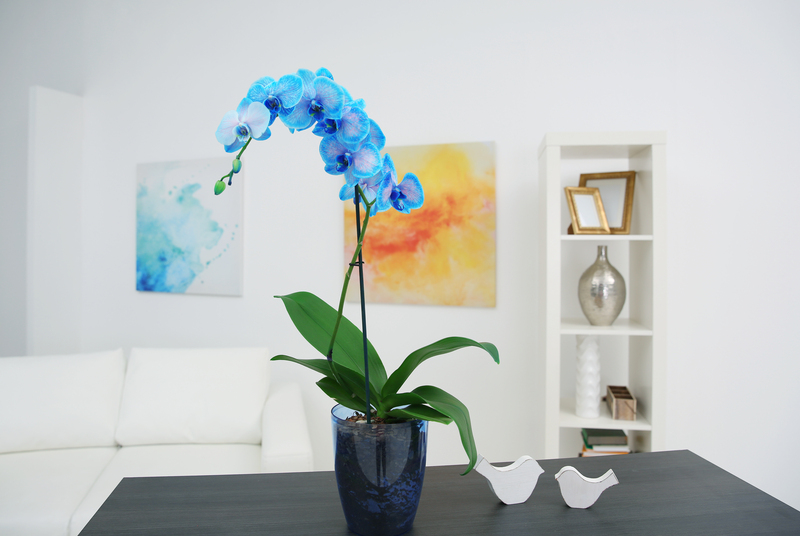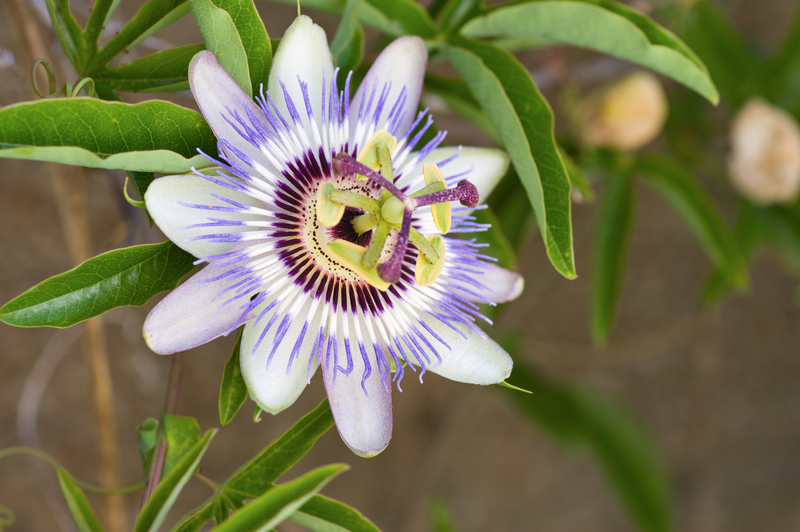Discover Container Gardening: Flexible Planting Options
Posted on 26/08/2025
Discover Container Gardening: Flexible Planting Options
Container gardening has revolutionized how urban and suburban dwellers approach gardening. From compact balconies to sprawling patios, container gardens offer flexibility, creativity, and versatility for plant lovers. Whether you want to cultivate flavorful herbs, vibrant flowers, or even fruits and vegetables, container gardening offers a tailored solution for every space. In this comprehensive guide, we'll explore various container gardening options, tips for success, and inspiring ideas to help you get started.

What is Container Gardening?
Container gardening is the practice of growing plants in pots, planters, boxes, and other portable vessels. It's a fantastic option for those with limited ground space or unsuitable soil conditions. By using containers, you can grow a diverse array of plants almost anywhere--indoors, outdoors, on windowsills, balconies, rooftops, and patios.
Advantages of Container Gardening
- Space Efficiency: Grow plants in small spaces or on hard surfaces where traditional gardening isn't possible.
- Portability: Move plants to optimize sunlight, protect from weather, or redecorate your space.
- Soil and Pest Control: Choose specific soil blends and keep pests and diseases at bay.
- Accessibility: Containers can be raised to reduce bending or accommodate gardeners with mobility challenges.
- Design Flexibility: Experiment with colors, shapes, and plant arrangements to enhance your outdoor or indoor decor.
Types of Containers for Your Garden
Selecting the right type of container is essential for a thriving container garden. There are numerous materials, shapes, and sizes available. Let's explore the most popular options:
1. Terracotta Pots
- Breathability: Terracotta is porous, allowing air and water exchange to help prevent root rot.
- Classic Aesthetic: Provides a timeless, rustic look suitable for herbs, succulents, and flowers.
- Considerations: They dry out quickly--ideal for plants preferring drier soil, but may require frequent watering.
2. Plastic Planters
- Lightweight and Versatile: Easy to move, available in countless shapes, colors, and designs.
- Economical: Generally less expensive and durable for both indoor and outdoor use.
- Water Retention: Retain moisture longer--good for water-loving plants, but be aware of potential root rot.
3. Wooden Boxes
- Natural Look: Blends beautifully in gardens and decks.
- Customizable: Easy to build or modify for unique sizes and shapes.
- Tip: Ensure the wood is untreated and rot-resistant. Line with plastic to extend its lifespan.
4. Ceramic and Glazed Pots
- Decorative Appeal: Adds artistic flair with various colors and finishes.
- Durability: Heavy and stable, ideal for taller or top-heavy plants.
- Insulation: Retain moisture and moderate soil temperature effectively.
5. Hanging Baskets
- Maximize Vertical Space: Perfect for trailing flowers, strawberries, or small vegetables.
- Visual Interest: Create lush, cascading displays on balconies or porches.
Other Innovative Containers
- Grow bags
- Recycled containers (old buckets, tins, crates)
- Vertical planters and wall pockets
- Window boxes
- Self-watering containers
With a wide array of containers, flexible planting options have never been more accessible or exciting!
Best Plants for Container Gardening
The range of plants suited to container gardening is broad and varied. The secret to success lies in matching the right plants with the right containers and conditions.
Herbs
- Basil, mint, oregano, rosemary, parsley, thyme, and chives thrive in pots and are ideal for kitchen gardens.
Flowers
- Petunias, marigolds, geraniums, pansies, begonias, and impatiens brighten balconies and windowsills with seasonal color.
Fruits and Vegetables
- Tomatoes, peppers, lettuce, radishes, strawberries, dwarf citrus, and even potatoes can be grown in larger containers or grow bags.
Small Shrubs and Trees
- Citrus trees, bay laurel, dwarf conifers, and Japanese maples can all flourish in suitable pots.
Succulents and Cacti
- These require minimal care and are perfect for smaller containers and artistic arrangements.
Tip: Always consider the light, water, and space needs of your chosen plants. Some coexist happily in shared pots, while others need their own space to flourish.
How to Prepare and Plant Your Container Garden
Ready to start? Here's a step-by-step guide to maximizing your container gardening success:
- Choose Your Container: Ensure it has drainage holes and is large enough to accommodate your plant's root system.
- Select the Right Soil: Use high-quality, well-draining potting mix--don't use garden soil, which can be too dense and compact.
- Add Drainage Material: Place small rocks, broken pottery, or gravel at the base to assist with drainage (optional but helpful for larger containers).
- Plan Your Design: Arrange tall, focal-point plants in the center or back, with medium-height and trailing varieties along the sides or front.
- Plant: Gently remove plants from their nursery containers, loosen roots, and plant at the correct depth.
- Top Dress: Add mulch or decorative stones to retain moisture and prevent weeds.
- Water Well: Moisten thoroughly after planting--monitor regularly, as containers dry out more quickly than garden beds.
Tips for Thriving Container Gardens
- Monitor Moisture: Check soil moisture daily in hot weather--containers can dry out rapidly.
- Fertilize Regularly: Container-grown plants exhaust nutrients faster; apply a balanced liquid fertilizer as directed.
- Prune and Deadhead: Regularly remove spent blooms and leaves to encourage growth and flowering.
- Rotate Plants: Move containers to ensure even light exposure and prevent leggy growth.
- Repot When Necessary: Transplant to larger containers if you notice roots circling the container or stunted growth.
- Control Pests: Inspect leaves and stems regularly, and use organic pest control methods if needed.
Seasonal Container Gardening Ideas
Spring
- Edible Herbs: Start tender herbs like basil, cilantro, and parsley.
- Bright Annuals: Try pansies, violas, and primroses for a vivid spring display.
Summer
- Bursting Blooms: Sun-loving petunias, geraniums, and cosmos thrive.
- Vegetable Crops: Grow salad greens, peppers, and bush tomatoes.
Fall
- Ornamental Grasses: Add height and movement to autumn container gardens.
- Late-Season Color: Mums and asters keep your space lively into cooler months.
Winter
- Evergreens: Dwarf pines, boxwood, and holly bring structure and color.
- Festive Touches: Seasonal displays with pinecones, branches, and winter berries add charm to entryways.
Creative Container Gardening Layouts
- Cluster Containers: Group differently sized pots together for visual interest and high impact.
- Vertical Stacking: Use plant stands, trellises, wall-mounted planters, or hanging systems to maximize small areas.
- Mix and Match: Combine fruits, herbs, flowers, and foliage for a multi-sensory garden.
- Themed Gardens: Create a pollinator garden, scented garden, or Mediterranean-inspired oasis.
Common Container Gardening Challenges
While container gardening is rewarding and adaptable, it comes with unique challenges. Here's how to tackle them:
1. Overwatering and Drainage Issues
Always check that containers have adequate drainage holes. Water only when the top inch of soil is dry. Soggy roots can lead to plant diseases and failure.
2. Underfertilization
Because water washes nutrients out of pots quickly, supplement with slow-release or liquid fertilizers according to plant needs.
3. Rapid Soil Drying
Use mulch, water-retentive mediums, and shade during extreme heat to prevent stress on your plants.
4. Limited Root Space
Choose plants that match the container size, or be prepared to repot/refresh soil annually.
5. Weather Extremes
Protect containers from extreme temperatures by moving them indoors, grouping them for shelter, or using insulation like bubble wrap or straw in winter.
Eco-Friendly Container Gardening Tips
- Reuse and Recycle: Upcycle containers and use recycled materials for a greener effort.
- Compost: Add organic matter to your potting mix to reduce waste.
- Opt for Native Plants: They typically require less water and care.
- Water Wisely: Use rainwater or self-watering containers to conserve resources.

Frequently Asked Questions About Container Gardening
What is the best soil for container gardening?
High-quality potting mix is ideal for container plants. Avoid using garden soil as it compacts and drains poorly. Look for mixes that contain peat, compost, perlite, and vermiculite for optimal results.
How often should I water my container plants?
Check the soil daily, especially in hot or windy weather. A general rule is to water when the top inch of soil feels dry. Morning watering helps avoid fungal diseases.
Do containers need drainage holes?
Yes! They're essential to prevent excess water from accumulating, which can suffocate roots and cause rot.
Can I reuse potting soil from year to year?
You can, but it's best to refresh potting mixes annually by mixing in compost, removing old roots, and replacing some of the old soil with fresh mix for nutrient balance.
Conclusion: Unlock Your Garden's Potential With Container Gardening
Discover container gardening and open up a world of flexible planting options for every home and lifestyle! From city balconies to suburban patios, the ability to create beautiful, productive gardens in pots means anyone can enjoy the pleasures of growing plants. With the wealth of container options, plant choices, and creative layouts available, your dream garden is within reach--no matter your space or experience level.
Experiment, explore, and let your container garden reflect your personal style. With a little planning and care, container gardening is more than just a trend--it's a gateway to a greener, healthier, and more enjoyable environment right at your doorstep.
```
